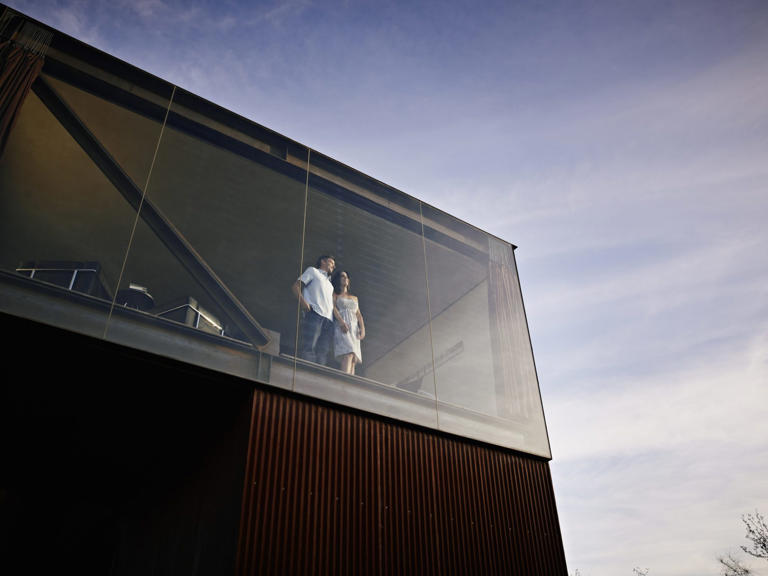In December of last year, Fortune described the housing market as being in a state of “a new American era of housing haves and have-nots.” This observation remains pertinent, particularly in the context of the luxury real estate market. The luxury segment has exhibited impressive resilience and growth, even as broader housing trends reflect significant challenges.
Record-High Luxury Home Prices
In the second quarter of 2024, luxury home prices reached unprecedented levels. The median price for a luxury home soared to $1,180,000, marking a remarkable 9% increase from the previous year. This surge represents the largest annual jump in nearly two years. In contrast, the median price for non-luxury homes also hit a record high but rose at a slower pace, increasing by under 4% to reach $342,500. The disparity in price growth underscores the resilience of the luxury market amid broader housing market trends.
Factors Driving Luxury Home Prices: The surge in luxury home prices can be attributed to several factors, including continued high demand among affluent buyers, limited high-end inventory, and the influence of all-cash transactions. These dynamics have allowed the luxury segment to outpace the growth seen in more typical housing categories.
The Impact of Cash Purchases on the Luxury Market
One of the defining features of the luxury real estate market is the prevalence of all-cash transactions. During the second quarter, nearly 44% of luxury homes were purchased with cash, a figure that remained consistent with the previous year. This is in stark contrast to the broader market, where rising mortgage rates have had a more pronounced effect on borrowing costs.
Why Cash Transactions Matter: For high-net-worth individuals, the high mortgage rates that have exceeded 7% for much of the second quarter are less of a deterrent. The ability to make all-cash purchases enables these buyers to sidestep the higher costs of borrowing, thus maintaining their purchasing power and contributing to the continued strength of the luxury market.
Regional Variations in Luxury Home Sales
The luxury real estate market is not monolithic; it exhibits significant regional variations. Areas such as Providence, Rhode Island, San Jose, California, and Nassau County, New York, have seen the most substantial increases in median sale prices for luxury homes. Meanwhile, cities like Nashville, Tampa, and Seattle have experienced notable growth in luxury home sales.
Noteworthy Sales: Some of the highest-profile transactions include a property in Glenwood Springs, Colorado, which sold for a staggering $77 million, and another in Los Angeles, which went for approximately $63 million. These sales highlight the enduring appeal and high value of luxury properties in select markets.
Market Adjustments and Future Outlook
Despite the impressive performance of the luxury market, it is not immune to broader economic trends. Redfin’s senior economist, Sheharyar Bokhari, has noted that while the luxury market remains robust, the rapid price increases seen in recent months are unlikely to continue. Increasing inventory and longer time on the market are expected to moderate the rate of price growth moving forward.
Market Dynamics: The adjustment in the luxury market reflects a broader trend of increased inventory and changing buyer preferences. As more homes become available and the pace of sales slows, luxury prices may stabilize or grow at a more measured rate.
Broader Housing Market Challenges
The broader housing market faces a range of significant challenges, particularly in terms of affordability. Despite recent declines in typical monthly housing payments, which have fallen to their lowest point in four months, the overall cost of homeownership remains substantially higher than pre-pandemic levels.
Affordability Crisis: According to Shaun Donovan, former U.S. Secretary of Housing and Urban Development, the country is experiencing the worst housing affordability crisis ever. Mortgage payments have more than doubled since before the pandemic, driven by a combination of soaring home prices and rising interest rates.
Impact on Homebuyers: High homeownership costs are deterring many potential buyers, contributing to a decrease in both existing and new home sales. The “lock-in effect,” where homeowners are reluctant to sell due to favorable existing mortgage rates, further compounds the problem by constraining market supply and affecting transaction volumes.
Looking Ahead
The luxury home market continues to demonstrate strength and resilience, supported by high demand from affluent buyers and the prevalence of cash transactions. However, the broader housing market remains constrained by affordability issues and shifting economic conditions. As mortgage rates and home prices adjust, the dynamics of both luxury and non-luxury segments will continue to evolve. The disparity between the experiences of high-end buyers and the general housing market underscores the ongoing challenges in achieving broad-based housing affordability and accessibility.
